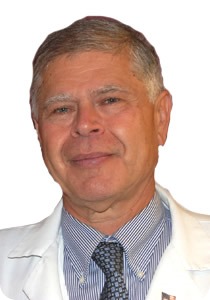Anti-epileptic drugs, bone loss and supplements: an interview with Dr. Antonio A. Lazzari, VA Boston Health Care System, Boston University School of Medicine
Interview conducted by April Cashin-Garbutt, BA Hons (Cantab)

What are anti-epileptic drugs (AEDs) and how frequently do patients with epilepsy need to take them?
Antiepileptic drugs are medications used to prevent and control seizure disorders. These medications are also frequently used for other diagnoses other than seizures, however this current study concentrated on patients with a seizure disorder.
Generally, patients need to take these medications daily as chronic therapy for their disorder. Medications in this class traditionally known to accelerate bone loss are phenytoin, carbamazepine, valproic acid and phenobarbital although newer AEDs have been described as having this possible side effect.
The risk of osteoporosis increases with the time exposure of the patient to these medications and also when there is a combined use of those medications or other medications than can cause bone loss such as glucocorticoids.
How much evidence is there that AEDs accelerate bone loss?
This side effect from AED’s was initially described in the 1960’s in institutionalized patients. Since that time, there has been much research and publications regarding this topic.
Currently bone loss caused by chronic use of AED’s is considered to be a well-established side effect and it is a main concern by practitioners prescribing this type of medications.
What are the main problems to the skeleton caused by AED’s?
The main side effect to the skeleton caused by AED’s is that they accelerate the loss of bone mass and possibly by affecting the bone structure they cause weakening of the skeleton. This in turn increases an individual’s risk of experiencing a fragility fracture, which is a fracture that occurs with minimal trauma.
Vertebral and non-vertebral fractures are commonly found in the epileptic population, this increased risk of fractures is felt to be a direct adverse effect of AED’s on the skeleton, but can be also a consequence of falls caused either by a seizure activity or other medication side effects such as drowsiness or lack of balance.
Please can you outline your recent study into preventing and treating bone loss in epilepsy patients receiving AED therapy?
ADOPT was designed by the three main investigators from the VA Boston Health Care System Dr. Phillip Dussault, Dr. Manisha Thakore-James and myself to evaluate whether use of a bisphosphonate (risedronate) in addition to calcium and vitamin D in male veteran epileptic patients chronically taking antiepileptic drugs (AEDs) can prevent the loss of bone mass (BMD) associated with AED use compared to patients treated with a placebo plus calcium and vitamin D. As a secondary end point we studied the incidence of new morphometric vertebral and non-vertebral fractures.
ADOPT was designed as a prospective two year randomized placebo controlled study, double blinded involving 80 male veterans with epilepsy who were being treated with AEDs such as phenytoin, phenobarbital, sodium valproate or carbamazepine for a minimum of two years. All enrolled participants received calcium and vitamin D supplementation, and were randomized to risedronate or matching placebo.
Total body, bilateral proximal femora and AP lumbar spine BMDs in addition to morphometric sequential lateral vertebral assessments were evaluated by a dual energy X-ray absorptiometry (DXA) instrument. Comparisons of BMDs were made between baseline, one year and after two years of enrollment in the study. The incidence of new vertebral and non-vertebral fractures were secondary end-points.
How does your study differ from previous research on this topic?
To the best of our knowledge no randomized clinical trials have been published on the use of a bisphosphonate in the prevention of osteoporosis and osteoporotic fractures in male veteran epileptic patients taking anticonvulsants.
What were the main findings of this study and were you surprised by any of the results?
We observed that calcium and vitamin D supplementation or calcium and vitamin D supplementation in addition to risedronate improved BMD in more than 69% of male epileptic veteran patients using AEDs.
In the group receiving risedronate plus calcium and vitamin D there was a significant improvement of BMD at the lumbar spine as compared to the placebo group which also received calcium and vitamin D.
We were pleased to observe that the use of a bisphosphonate (risedronate) plus calcium and vitamin D prevented the incidence of new vertebral fractures and one non-vertebral fractures in this cohort.
What impact do you think this research will have?
We know that at present there are no other clinically based studies to support preventive and treatment guidelines for preventing osteoporotic fractures on this population at risk, this study may help to support evidence based preventive treatment guidelines to this population at risk.
What are your future research plans?
Our plan is to continue the longitudinal observation of these treatment measures to this population and to study the long term effect of an intensive preventive treatment on those patient populations.
Where can readers find more information?
I would refer readers to the National Osteoporosis Foundation website, www.nof.org. This website has a clinician’s guide to osteoporosis prevention and treatment as well as a lot of patient education resources.
http://www.bumc.bu.edu/medicine/faculty/lazzaria/
About Dr. Antonio A. Lazzari
 Dr. Antonio Lazzari is an Associate Professor of Medicine at Boston University School of Medicine. His research focuses on the evaluation, diagnosis, treatment and prevention of osteoporosis in men.
Dr. Antonio Lazzari is an Associate Professor of Medicine at Boston University School of Medicine. His research focuses on the evaluation, diagnosis, treatment and prevention of osteoporosis in men.
Dr. Lazzari also cares for both primary care and rheumatology patients, supervises residency clinics, attends in the inpatient general medical wards and mentors medical students from Boston University and Harvard Medical School, in addition to residents and fellows from BUMC, Beth Israel Deaconess Medical Center and Brigham and Women’s Hospital.
0 comments:
Post a Comment